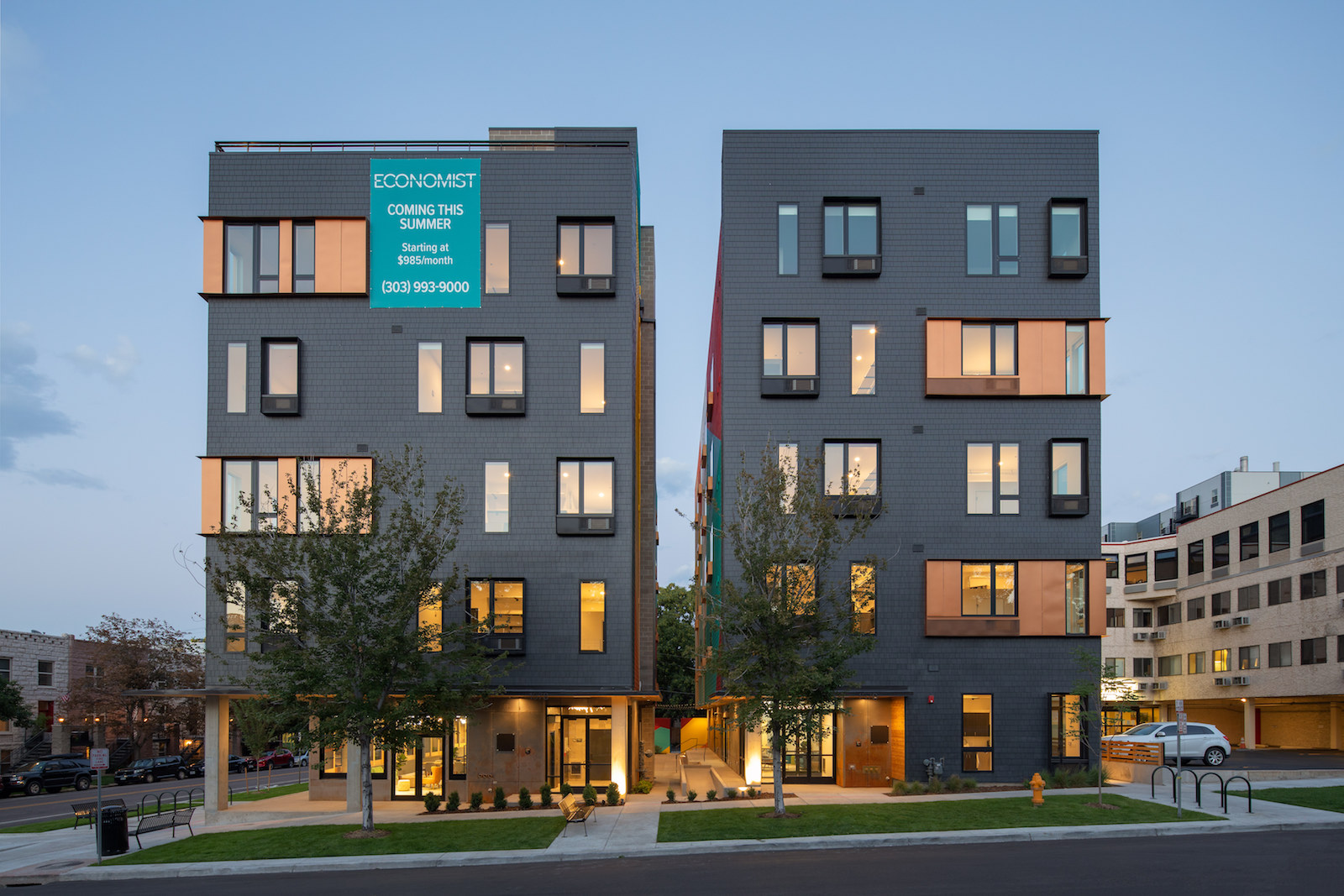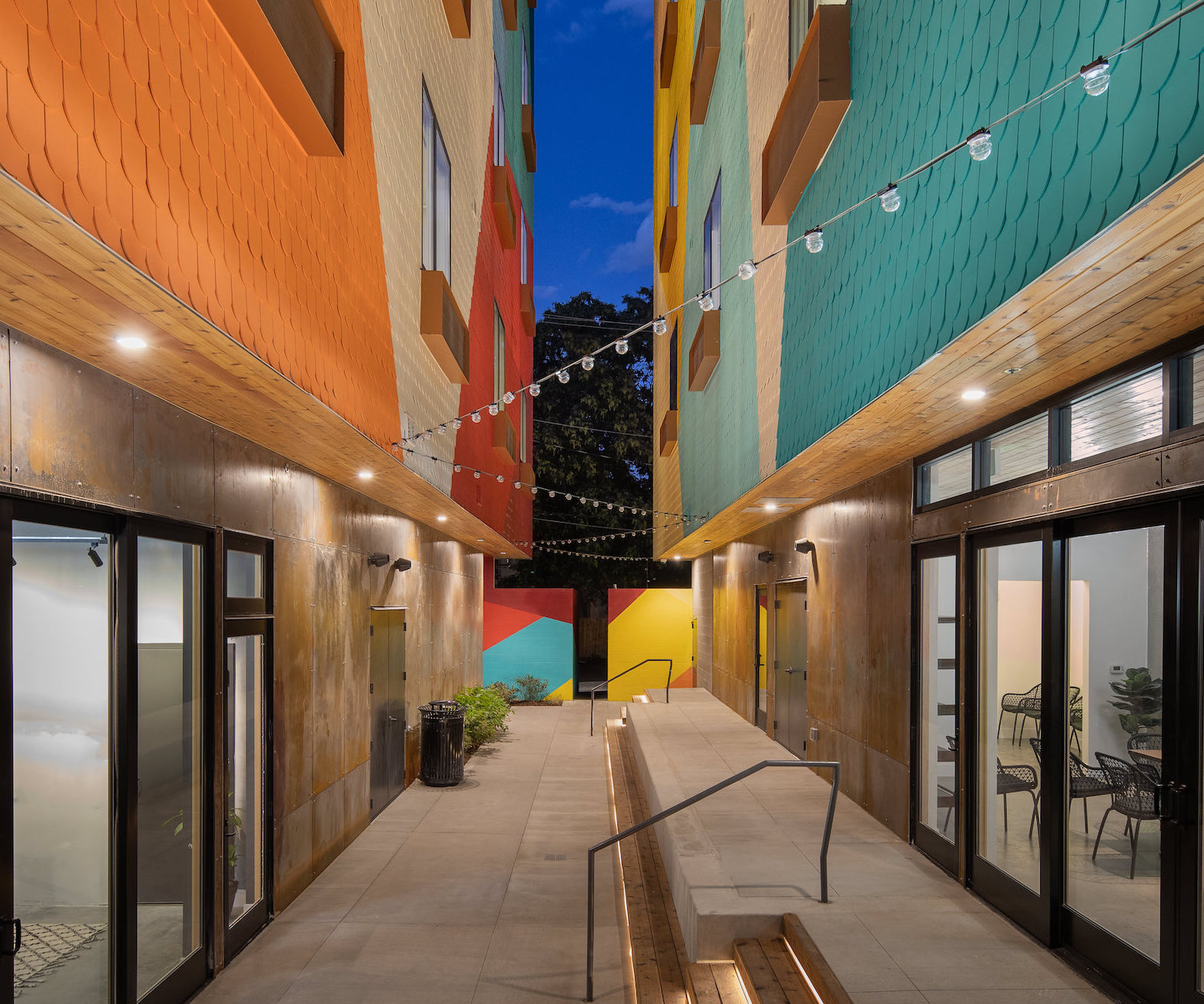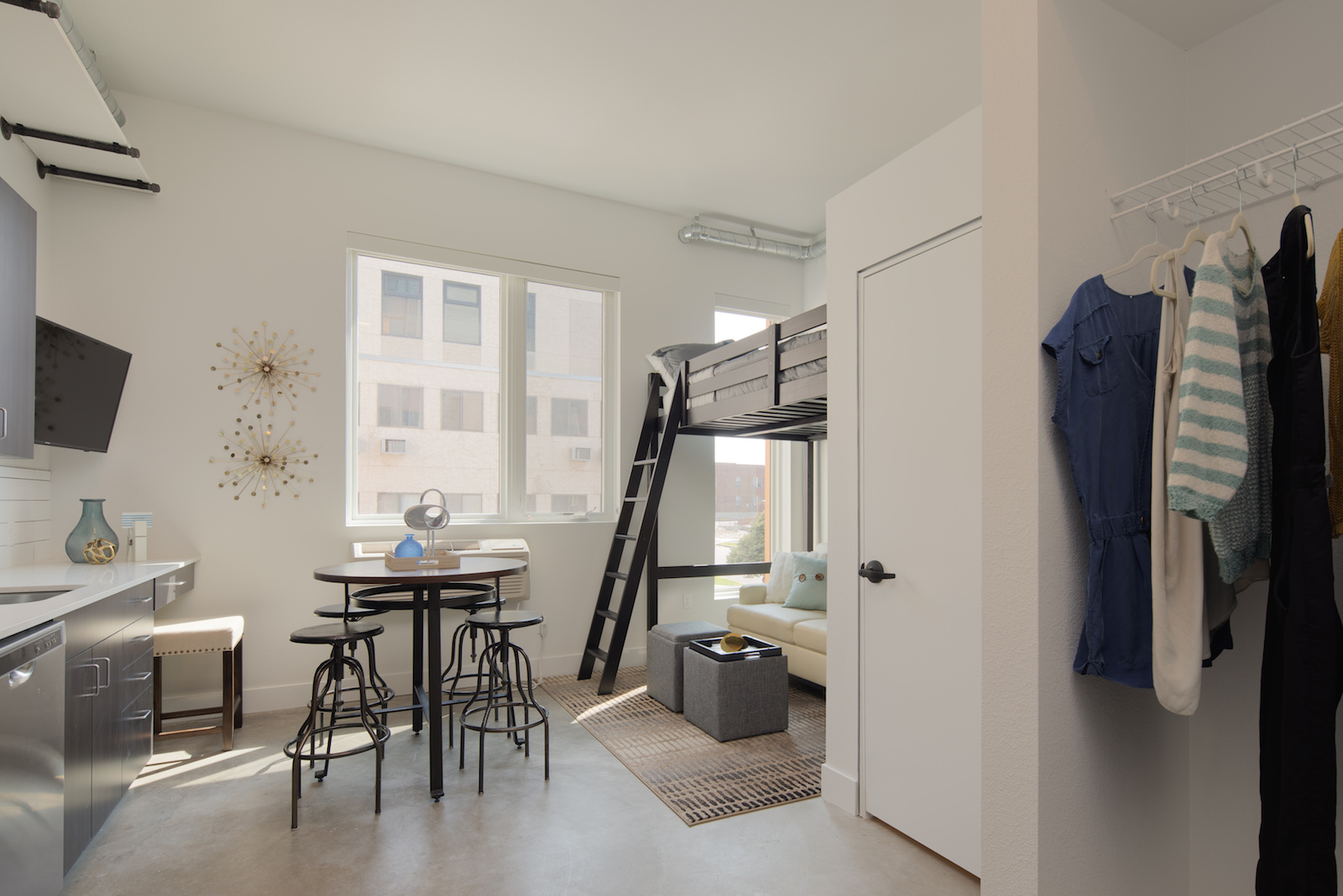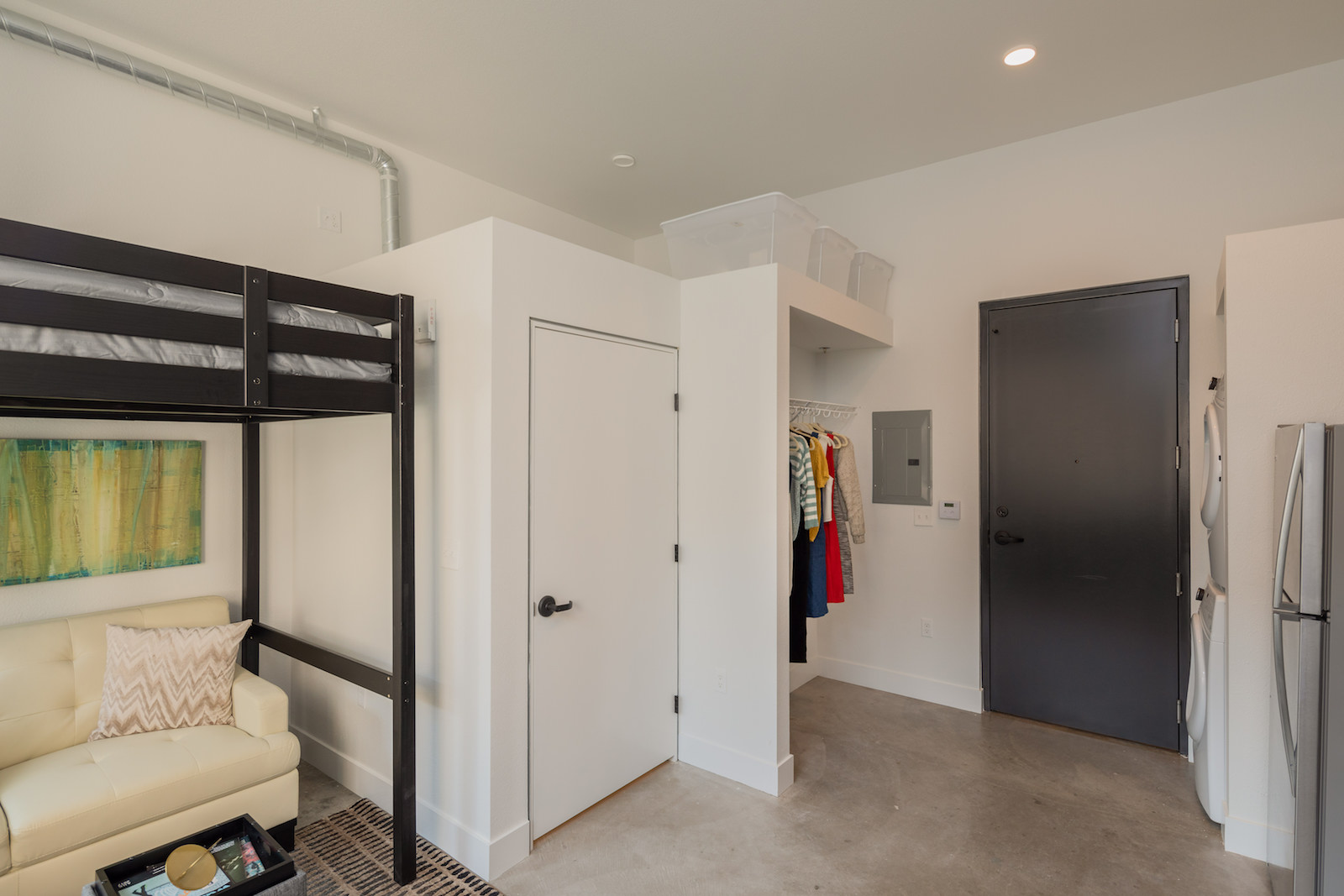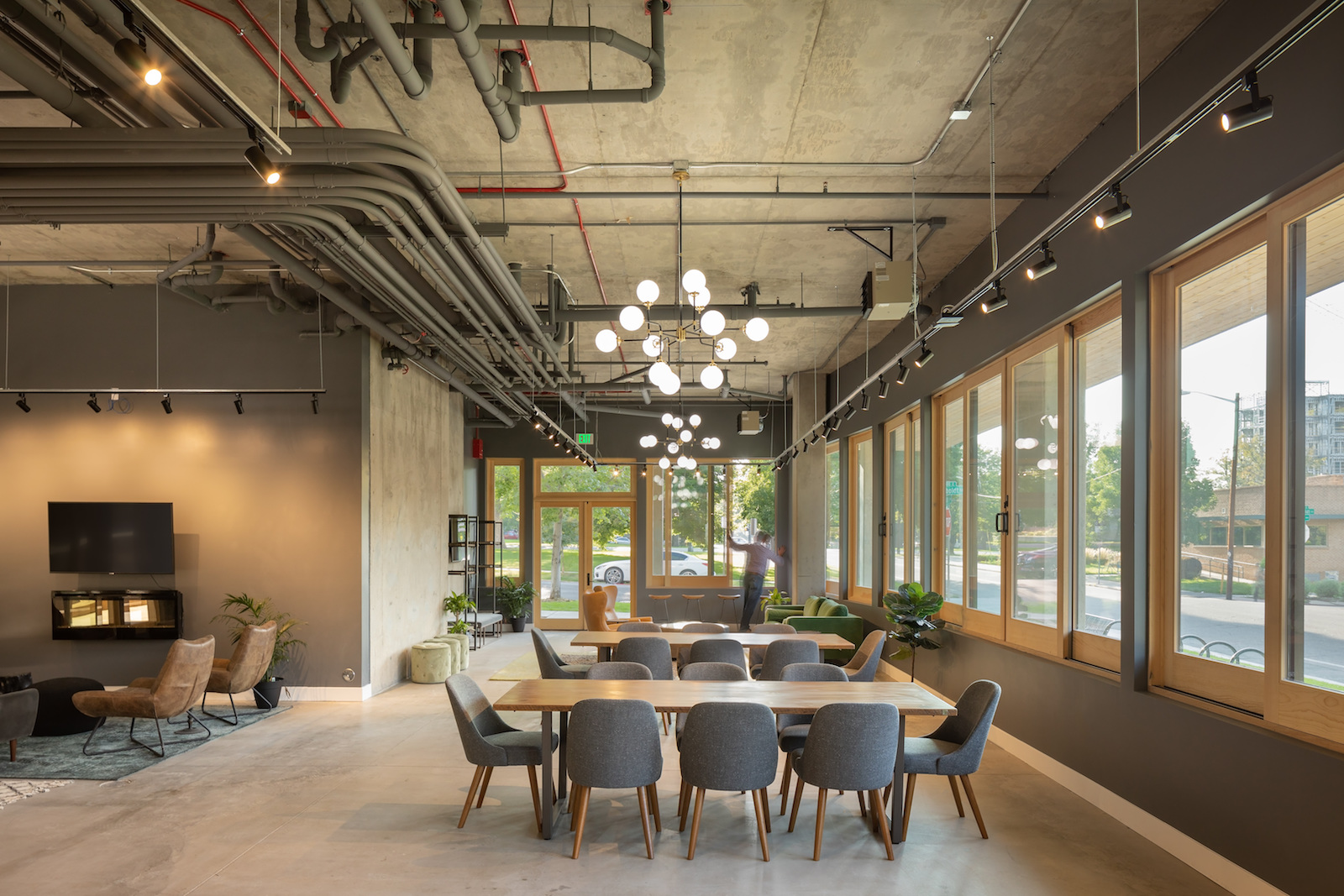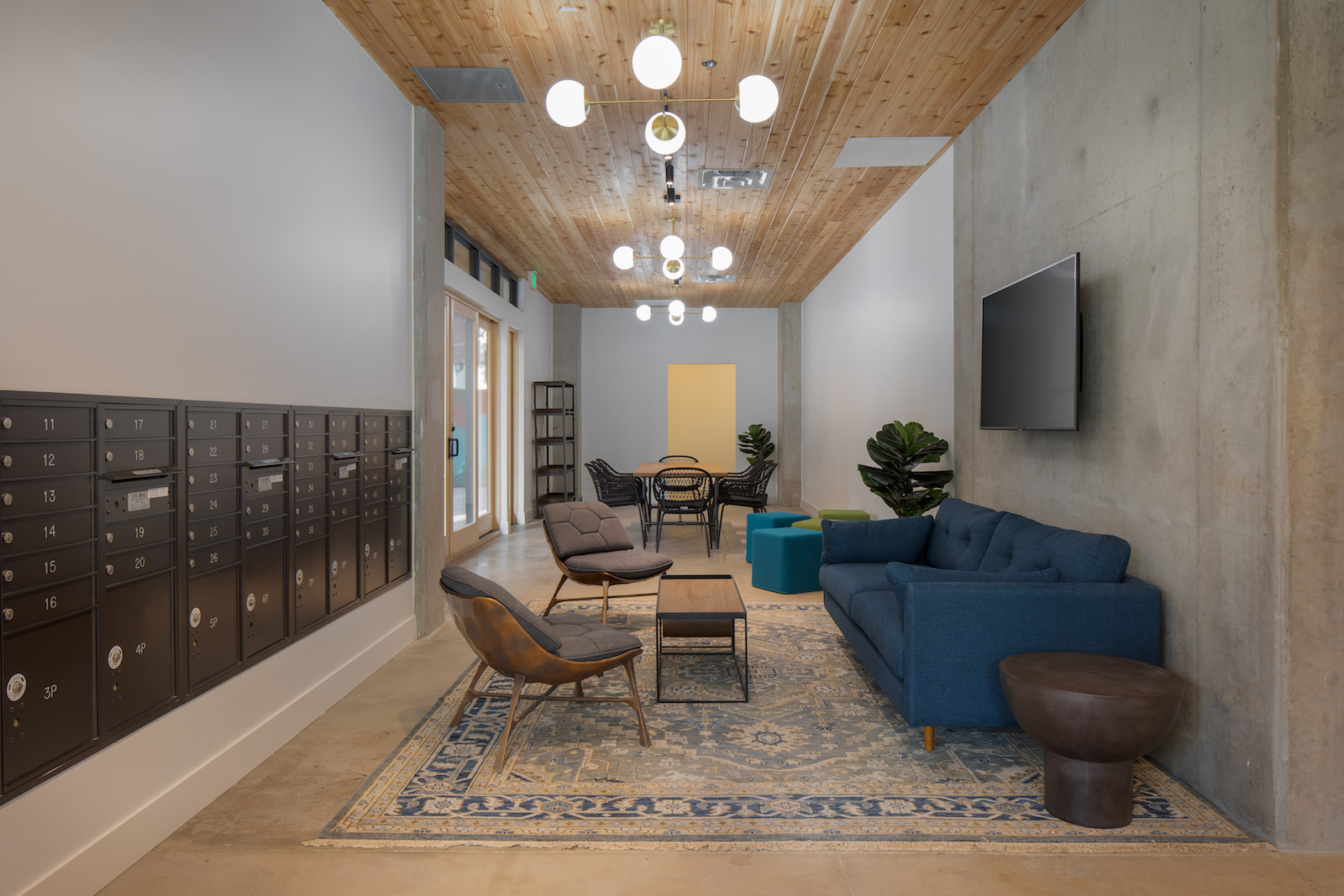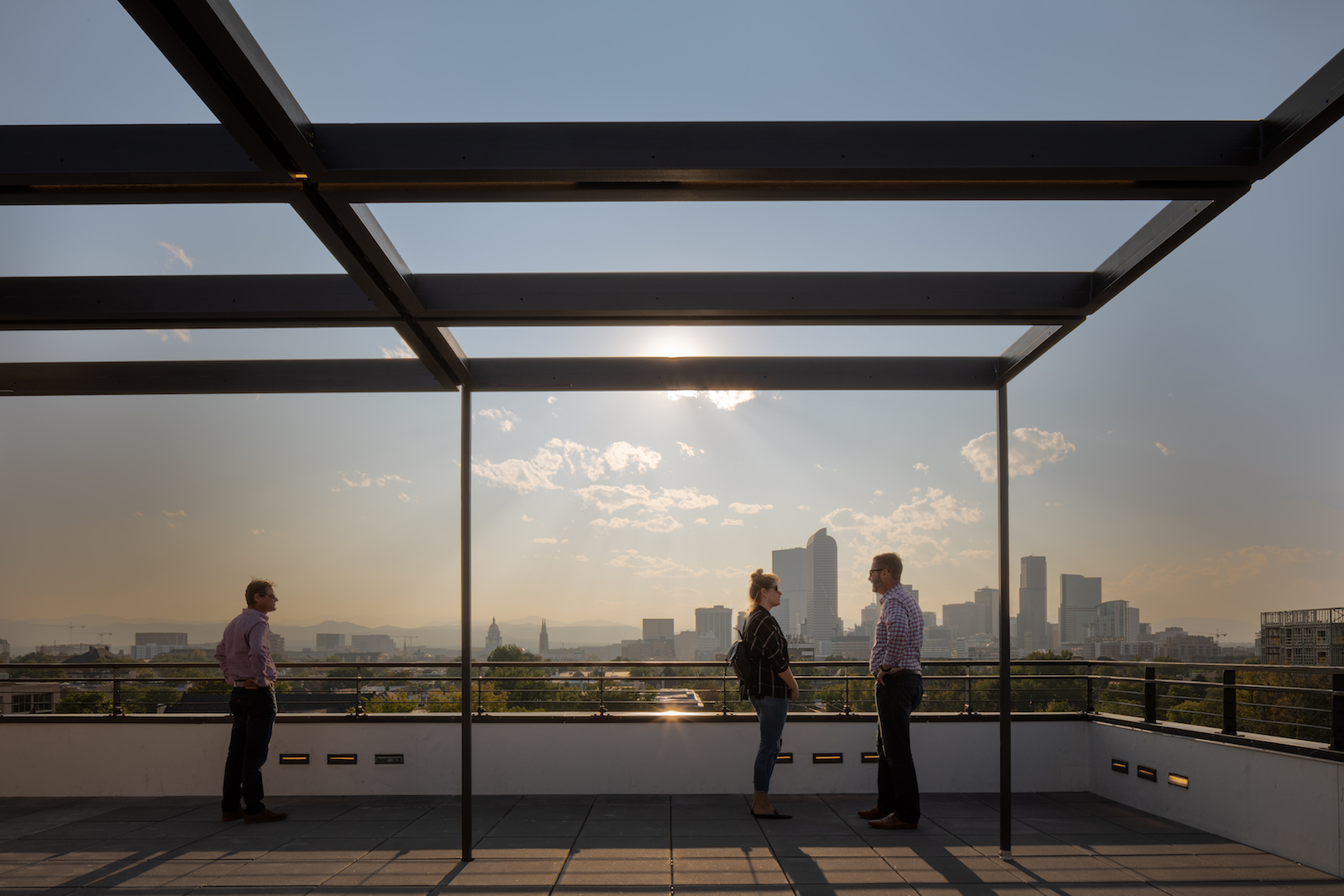The Local newsletter is your free, daily guide to life in Colorado. For locals, by locals.
There are a few ways to work around Denver’s sky-high rents these days—among them: moving to the ’burbs, Airbnb-ing your guest bedroom, or downsizing. If the latter sounds like the best option, the micro-apartments at Uptown’s new development, the Economist, just might soften the blow of parting with half of your stuff. The two-building development at 1570 Humboldt Street offers 97 studio and one-bedroom units ranging from 300 to just under 600 square feet—and prices starting around $1,000 per month.
Though the rent is straight out of 2002, the Economist’s design—the thoughtful creation of lead architect Nate Jenkins, a senior associate at OZ Architecture—is on the cutting edge. “I was very excited to show what kind of unit you could create in this size space,” says Jenkins, who researched micro-units in Seattle, Portland, New York City, and San Francisco before embarking on the Economist’s design. “I gleaned so many things from those experiences—and many were bad,” he says. “A lot of those places were just the results of developers trying to take advantage of high density and high rents, but the quality of space wasn’t important. That’s not the case with the Economist.”

These apartments are no bigger than the average hotel room, but live much larger thanks to a light-maximizing palette of white walls and warm-toned concrete flooring, 12-foot-high ceilings, full-size kitchen appliances, and stackable washer/dryers in each unit. “Just because you live in a small place doesn’t mean you like to cook less,” Jenkins says, “and when you have fewer clothes, you do laundry more often.”
He would know. Jenkins recently downsized his family’s living space from a 1,100-square-foot home to a 650-square-foot accessory unit on their property; the experience influenced his thoughts on everything from bathroom design to ski storage, which he cleverly integrated into each unit at the Economist. “I call it the ‘Colorado gear shelf,’” he says. “It’s painted white to blend in with the ceiling, but it’s deep and long enough to hold skis or a snowboard or even your fishing pole.”
A key component of the new minimalist, urban lifestyle the Economist promotes is community, which is built right into the development’s design. There’s a large rooftop patio—with views of the city and Front Range—for gathering, a shared gym, and a lobby furnished with tables and soft seating, which doubles as a communal work space. A rotating exhibition of artworks by local artists will adorn common area walls, and local street artist Thomas “Detour” Evans created a colorful mural that covers two of the building’s exterior walls.
The Economist seems to have arrived in Denver at the perfect time—when residents are struggling to find affordable and well-designed housing options, and at the peak of the tiny-home trend. “There’s this movement of people trying to rid themselves of having too much stuff, and from our experience with downsizing, we really got rid of a lot of our burden,” Jenkins says. “I know it sounds cheesy, but having too much stuff carries physical and mental weight.”
And besides, he adds, clean-up is a snap in a small space: “Now we come home and everything is organized and in its spot. It’s an efficient way of life.”
For leasing information, call 303-333-1999 or visit cornerstoneapartments.com.




